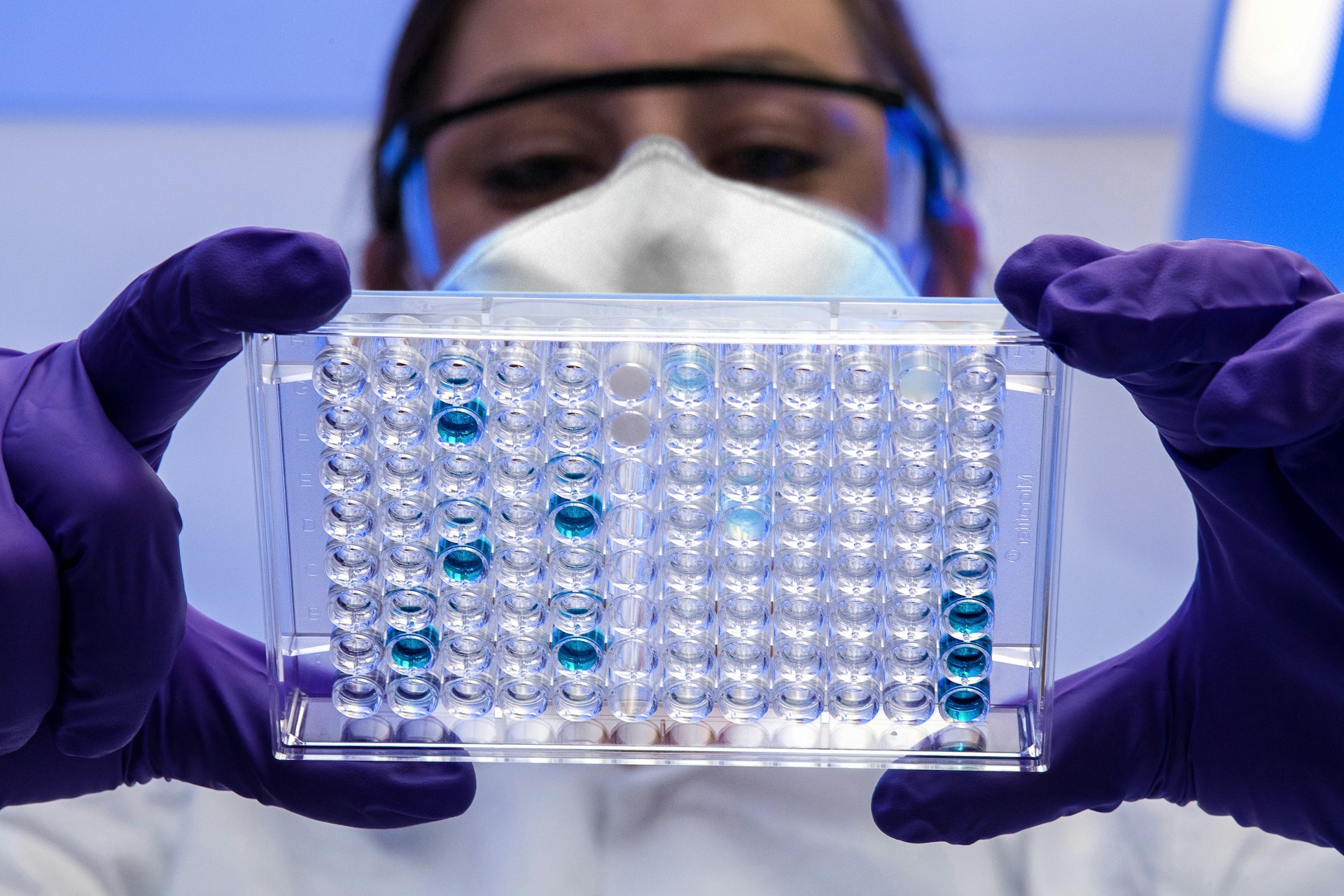A team of chemists at Washington University in St. Louis, led by Associate Professor Meredith Jackrel, has achieved new insights into the behavior of Matrin-3, a protein implicated in some cases of amyotrophic lateral sclerosis (ALS) and frontotemporal dementia (FTD). Their research, provides a clearer understanding of how this protein behaves under normal and disease-related conditions and could inform future therapeutic strategies.
Sprunger, M. L., Shinn, M. K., Talir, S. K., Lee, K., Pappu, R. v., & Jackrel, M. E. (2025). Matrin-3 forms spherical and wormlike assemblies that are modulated by RNA binding and ALS/FTD-associated mutations. Molecular Cell, 85(19), 3640-3660.e9. https://doi.org/10.1016/j.molcel.2025.08.034
Matrin-3 is a relatively understudied protein with a broad role in regulating nucleic acids, controlling cell survival and differentiation, and influencing gene expression. Mutations in the protein can lead it to misfold, causing abnormal interactions and functions that may contribute to neurodegenerative diseases. In ALS and FTD, the accumulation of misfolded proteins disrupts nerve function, eventually leading to progressive neurodegeneration. Understanding these processes at the molecular level has been a longstanding challenge.
Professor Meredith Jackrel, from Washington University in St. Louis stated,
“We found tiny spheres that seemed to transform naturally into worm-like shapes. We’ve never seen these types of shapes before, so that was our first hint that something unusual was happening.”
Jackrel’s team, including lead author Macy Sprunger, a staff scientist in chemistry, and collaborators Sabrina Talir, Ken Lee, Min Kyung Shinn, and Professor Rohit Pappu, focused on developing reliable methods to study Matrin-3. A major hurdle was isolating the protein from cellular material without altering its structure. Sprunger spent over two years refining techniques to purify Matrin-3, eventually achieving stable and reproducible samples suitable for detailed analysis.
With purified protein in hand, the team employed advanced electron microscopy to examine the assemblies formed by Matrin-3. They observed that the protein forms small spherical structures that can transform into elongated, worm-like shapes. This transition had not been documented before and suggested unusual underlying behavior. Collaborations with Shinn and Pappu at the Center for Biomolecular Condensates helped reveal that this structural transition is likely driven by a process known as microphase separation, in which molecules self-organize into distinct substructures on a nanoscale.
The interaction between Matrin-3 and RNA was a key focus of the study, as the protein naturally binds RNA in cells. Experiments demonstrated that non-mutated Matrin-3 assemblies shortened significantly when RNA was introduced, indicating a dynamic response to RNA binding. In contrast, ALS-associated mutant proteins maintained their worm-like shapes even in the presence of RNA, suggesting that disease-related mutations may lock the protein into configurations that resist normal cellular regulation. This altered responsiveness may contribute to the protein’s pathological effects in neurons.
Beyond the immediate implications for ALS and FTD, the findings also highlight microphase separation as a potentially widespread mechanism in cellular biology that has been difficult to observe due to the small size of the assemblies. By establishing methods to purify and visualize Matrin-3 in living cells, Jackrel’s lab has opened the door to studying similar processes in other proteins that form nanoscale assemblies, which could expand understanding of protein dynamics in health and disease.
The work exemplifies how detailed biochemical and biophysical studies can illuminate mechanisms underlying neurodegeneration. According to Jackrel, Sprunger’s contributions to purifying the protein and establishing experimental protocols represent a foundational advance for the lab and for researchers investigating the molecular roots of ALS. The team plans to continue investigating Matrin-3, including its interactions with other cellular components, its behavior in living cells, and broader applications of microphase separation in protein biology.
This research provides an essential step toward understanding the molecular basis of neurodegenerative disease and demonstrates the power of combining biochemical purification with advanced imaging and collaboration across chemistry and biomedical engineering disciplines. The insights gained from Matrin-3 could inform the development of novel therapeutic strategies and contribute to a deeper understanding of how protein misfolding drives disease.

Adrian graduated with a Masters Degree (1st Class Honours) in Chemical Engineering from Chester University along with Harris. His master’s research aimed to develop a standardadised clean water oxygenation transfer procedure to test bubble diffusers that are currently used in the wastewater industry commercial market. He has also undergone placments in both US and China primarely focused within the R&D department and is an associate member of the Institute of Chemical Engineers (IChemE).



